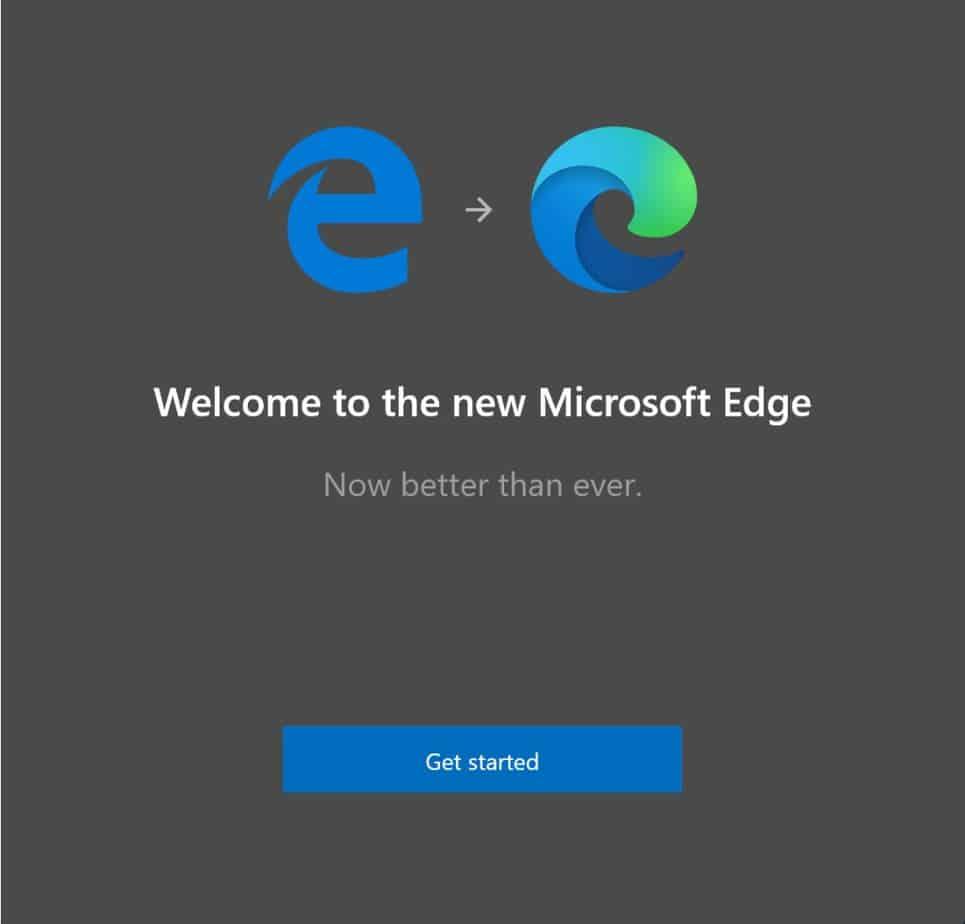Microsoft today officially announced that it is embracing the open source Google Chromium project in order to develop its own web browser for Microsoft Edge desktop devices, and the company also announced that it will separate browser updates from updates to its Windows 10 operating system, and that the Edge browser is coming to all Supported versions of Windows and macOS.
Microsoft had launched the Edge browser in July 2015 as the default and exclusive browser for Windows 10, but it did not see much adoption, and the company claimed by September 2017 that Edge was working on 330 million active devices, but it never revealed On the numbers of active users of the browser, it was content with simply saying that they exceed hundreds of millions, while Google said that its Chrome web browser passed one billion active users in May 2015.
The Edge browser has a market share of 4.34 percent, according to the latest figures from Net Applications, so Microsoft wants to make some big changes, which it says will happen "within the next year or so".
The first preview of Google Chromium's Edge will arrive in early 2019, according to Microsoft.
The adoption of the Chromium project means a lot to Microsoft, as EdgeHTML will be replaced by the Blink engine, the Chakra JavaScript engine will be replaced by the V8 engine, and Microsoft will take some of the user interface elements for use on non-Windows 10 platforms.
Microsoft hopes that moving to Chromium will help it create better web compatibility for its customers and reduce web fragmentation for all web developers, given that the Edge web platform will align with web standards and other web browsers based on the Chromium project.
The software company tries to reduce the waste of resources when building the Edge browser backend, and there is a lot of work to constantly update the browser engine to be standards-compliant and compatible with the actual web.
Microsoft has decided to let the open source community do it instead, but it will also participate in it, so it can focus on improving the browser itself.
The browser might not get noticeable changes, because the changes are internal, and most Edge users won't notice any significant difference except for some sites that will work as expected.
Edge uses the Blink/Chromium engine on Android and the WebKit/WKWebView engine on iOS, so when Edge on the desktop moves to Blink and V8, the main use case for EdgeHTML and Chakra engines will disappear overnight.
Windows 10 apps that use the EdgeHTML or Chakra engine will be able to continue to use them, according to Microsoft, but the company will also allow app developers to take advantage of the Chromium-based solution that Edge will use.
This is likely to affect normal applications that display web content, as well as progressive web applications, which are primarily mobile sites that mimic native applications.
App developers will therefore be able to choose to continue using the legacy option or switch to Chromium, and Microsoft says it has no plans to stop maintaining EdgeHTML and Chakra engines, although if usage drops, developers should expect support to come to an end.
In addition to better compatibility on the web, Edge users can take advantage of Chrome extension support, Microsoft expects that it will be very easy for developers to bring their custom Chrome extensions to Edge, and Microsoft aims to support existing Chrome extensions in Edge.


The software company wants to bring the Edge browser to all supported versions of Windows, as this browser is no longer exclusive to its Windows 10 operating system only, this means that Edge is coming to Windows 7 SP1 and Windows 8.1.
For Windows 10, this means that Chromium-based Edge and future updates will come to version 1607, version 1703, version 1709, version 1803, and version 1809 of Windows 10, all of which are supported versions of Windows, so you'll get the latest version of Edge until the company ends support .
Microsoft currently supports Windows Server 2008, Windows Server 2008 R2, Windows Server 2012, Windows Server 2012 R2, Windows Server 2016, Windows Server version 1709, version 1803, Windows Server version 1809, and Windows Server 2019.
Microsoft wants everyone to have the latest version of Windows, but for those who can't or refuse to upgrade, the company has decided to bring the latest version of Edge to these devices, and that means bringing Edge to older versions of Windows, including older versions of Windows. 10.
In major organizations there are computers running all kinds of versions of Windows, and they can now get the latest version of Edge.
If you think supporting older versions of Windows is Microsoft's only option, think again, the company wants to bring Edge to macOS, and this is strange for several reasons, because it stopped developing Internet Explorer for Mac since June 2003.
In return, Apple terminated Safari for Windows in July 2012, but Microsoft wants all computers within the organization to use the Edge browser, and this requires obtaining Mac computers.
The company doesn't expect many Mac users to switch to Edge, but it wants to make it easier for more developers, many of whom are using Macs to test Edge, and bringing Edge to macOS is a matter of developers, not market share.
The company updates Edge every six months, while at the same time Chrome and Firefox update every six weeks, Edge updates today are tied to Windows 10 updates, and half a year is a long time for the web, as it takes a long time to wait for compatibility fixes Performance improvements and new features.
Microsoft says getting more frequent updates will be a focus and expects to increase the frequency of updates rather than waiting for six months.
Chrome updates arrive on Windows, Mac, and Linux on the same day, while Firefox updates arrive on Windows, Mac, Linux, and Android on the same day.
Microsoft wants Edge on Windows and Mac to be the same, but it still seems too early for the company to commit to providing Edge updates within the same day for all supported versions of Windows and Mac.
Microsoft says it intends to become a "significant contributor" to the Chromium project, as the company will try to improve Chromium not just for Edge, but for other browsers as well, not just for PCs, but for other devices as well.
Web platform improvements will be prioritized to make Chromium-based browsers better on Windows devices, so that Microsoft leverages the success of the Web if it runs well on Windows, and last month the company made contributions to the Chromium project for ARM-based Windows devices.
The idea at the time was about porting Chrome to Windows 10 on ARM, but it seems Microsoft was thinking bigger, as Chromium-based browsers are only 32-bit, which means they run on emulation only, and negatively impact battery life. .
Microsoft wants to fix all Chromium-based browsers, including Chrome and Edge, and the company intends to continue working on ARM64 support, but it hopes to improve Chromium's web accessibility and take advantage of other hardware features such as touch support.
Google sees Microsoft's decision as largely a good thing, which isn't entirely surprising, given that Google has created the open source Chromium project. Chromium contributors, and we look forward to working with her and the web standards community to advance the open web, support user choice, and deliver great browsing experiences.”
What Google doesn't say is that the company is still not satisfied with Edge, as the Microsoft Store still doesn't allow browsers that don't work with the EdgeHTML engine, meaning devices running Windows 10 S Mode can't install Chrome, Firefox, or any browser It's a third party, and Microsoft still has to say if that will change.
Mozilla meanwhile sees Microsoft's move as an additional sign that users should switch to Firefox, and a Mozilla spokesperson said: "This only increases the importance of Mozilla's role as the only standalone option."
"We are not going to say that implementing Google for the web is the only option that consumers should have. That's why we built Firefox in the first place. That is why we always strive for a truly open network.”
Mozilla always points out that it is developing the only independent browser, meaning that it is not associated with a technology company that has priorities that often do not align with the web, as Apple's Safari, Google's Chrome and Microsoft's Edge have their own interests depending on the company responsible for the browser.
Opera believes Microsoft is making a smart move, as it did the same thing six years ago, and a company spokesperson said: "We've noticed that Microsoft appears to be largely following in Opera's footsteps."
He added, “Switching to Chromium is part of a strategy that was successfully adopted in 2012. This strategy has proven fruitful for Opera, allowing us to focus on bringing unique features to our products. As for the impact on Chromium's ecosystem, we'll see how it plays out, but we hope it's a positive step for the future of the web."